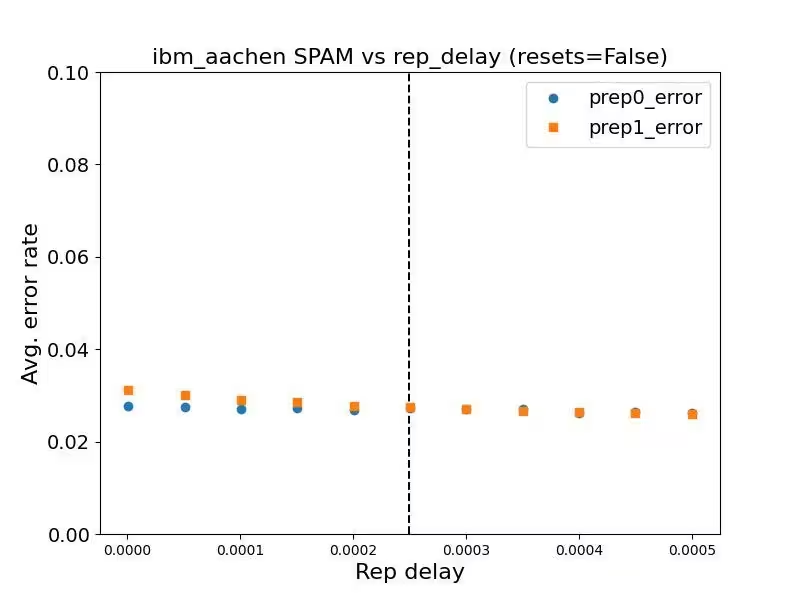Qubit initialization
Package versions
The code on this page was developed using the following requirements. We recommend using these versions or newer.
qiskit-ibm-runtime~=0.40.1
When a circuit is executed on an IBM® quantum processing unit (QPU), an implicit reset is typically inserted at the beginning of the circuit to ensure the qubits are initialized to zero. This is controlled by the init_qubits flag, set as a primitive execution option.
However, the reset process is not perfect, leading to state preparation errors. To alleviate the error, the system also inserts repetition delay time (or rep_delay) between circuits. Each backend has a different default rep_delay, but it's usually longer than T1 to allow the environment to reset the qubits. The default rep_delay can be queried by running backend.default_rep_delay.
All IBM QPUs use dynamic repetition rate execution, which allows you to change the rep_delay for each job. Circuits you submit in a primitive job are batched together for execution on the QPU. These circuits are executed by iterating over the circuits for each shot requested; the execution is column-wise over a matrix of circuits and shots, as illustrated in the following figure.

Because rep_delay is inserted between circuits, each shot of the execution encounters this delay. Therefore, lowering the rep_delay decreases the total QPU execution time, but at the expense of increased state preparation error rate, as can be seen in the following image:

Setting both rep_delay=0 and init_qubits=False essentially "merges" the circuits together, since the qubits will begin in the final state from the previous shot.
Note that while circuits in a primitive job are batched together for QPU execution, there is no guarantee on the order the circuits from PUBs are executed. Thus, even though you submit pubs=[pub1, pub2], there is no guarantee the circuits from pub1 will run before those from pub2. There is also no guarantee that circuits from the same job would run as a single batch on the QPU.
Specify rep_delay for a primitive job
from qiskit_ibm_runtime import QiskitRuntimeService, SamplerV2 as Sampler
service = QiskitRuntimeService()
# Make sure your backend supports it
backend = service.least_busy(
operational=True, min_num_qubits=100, dynamic_reprate_enabled=True
)
# Determine the allowable range
backend.rep_delay_range
sampler = Sampler(mode=backend)
# Specify a value in the supported range
sampler.options.execution.rep_delay = 0.0005Next steps
- Try an example in the Quantum approximate optimization algorithm (QAOA) tutorial.
- Review how to get started with primitives.